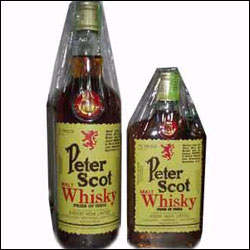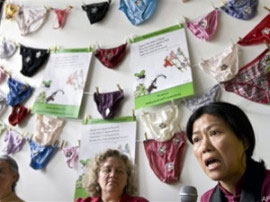AN APPEAL FOR SUPPORT
- We seek your support to meet the expenses relating to the formatting of articles and books, maintaining and running the journal through hosting, correrspondences, etc.Please write to the Editor in his e-mail address mthirumalai@comcast.net to find out how you can support this journal.
- Also please use the AMAZON link to buy your books. Even the smallest contribution will go a long way in supporting this journal. Thank you. Thirumalai, Editor.
BOOKS FOR YOU TO READ AND DOWNLOAD FREE!
- Status Marking in Tamil - A Ph.D. Dissertation ...
P. Perumalsamy, Ph.D. - LANGUAGE AND POWER IN COMMUNICATION ...
Editors: Jennifer M. Bayer, Ph.D., and Pushpa Pai, Ph.D. - Onomatopoeia in Tamil ...
V. Gnanasundaram, Ph.D. - Linguistics and Literature ...
C.Shunmugom, Ph.D., and C. Sivashanmugam, Ph.D., V. Thayalan, Ph.D. and C. Sivakumar, Ph.D. (Editors) - Translation: New Dimensions ...
C.Shunmugom, Ph.D., and C. Sivashanmugam, Ph.D., Editors - Language of Headlines in Kannada Dailies ...
M. N. Leelavathi, Ph.D. - Cooperative Learning Incorporating
Computer-Mediated Communication: Participation, Perceptions, and Learning Outcomes
in a Deaf Education Classroom ...
Michelle Pandian, M.S. -
The Effects of Age on the Ability to Learn English As a Second Language ...
Mariam Dadabhai, B.A. Hons. - A STUDY OF THE SKILLS OF READING
COMPREHENSION IN ENGLISH DEVELOPED BY STUDENTS OF STANDARD IX IN THE SCHOOLS IN TUTICORIN DISTRICT, TAMILNADU ...
A. Joycilin Shermila, Ph.D. - A Socio-Pragmatic Comparative Study of Ostensible Invitations in English and Farsi ...
Mohammad Ali Salmani-Nodoushan, Ph.D. - ADVANCED WRITING - A COURSE TEXTBOOK ...
Parviz Birjandi, Ph.D.
Seyyed Mohammad Alavi, Ph.D.
Mohammad Ali Salmani-Nodoushan, Ph.D. - TEXT FAMILIARITY, READING TASKS, AND ESP TEST PERFORMANCE: A STUDY ON IRANIAN LEP AND NON-LEP UNIVERSITY STUDENTS - A DOCTORAL DISSERTATION ...
Mohammad Ali Salmani-Nodoushan, Ph.D. - A STUDY ON THE LEARNING PROCESS OF ENGLISH
BY HIGHER SECONDARY STUDENTS
WITH SPECIAL REFERENCE TO DHARMAPURI DISTRICT IN TAMILNADU ...
K. Chidambaram, Ph.D. - SPEAKING STRATEGIES TO OVERCOME COMMUNICATION
DIFFICULTIES IN THE TARGET LANGUAGE SITUATION - BANGLADESHIS IN NEW ZEALAND ...
Harunur Rashid Khan - THE PROBLEMS IN LEARNING MODAL AUXILIARY VERBS IN ENGLISH AT HIGH SCHOOL LEVEL ...
Chandra Bose, Ph.D. Candidate - THE ROLE OF VISION IN LANGUAGE LEARNING
- in Children with Moderate to Severe Disabilities ...
Martha Low, Ph.D. - SANSKRIT TO ENGLISH TRANSLATOR ...
S. Aparna, M.Sc. - A LINGUISTIC STUDY OF ENGLISH LANGUAGE CURRICULUM AT THE SECONDARY LEVEL IN BANGLADESH - A COMMUNICATIVE APPROACH TO CURRICULUM DEVELOPMENT by
Kamrul Hasan, Ph.D. - COMMUNICATION VIA EYE AND FACE in Indian Contexts by
M. S. Thirumalai, Ph.D. - COMMUNICATION
VIA GESTURE: A STUDY OF INDIAN CONTEXTS by M. S. Thirumalai, Ph.D. - CIEFL Occasional
Papers in Linguistics,
Vol. 1 - Language, Thought
and Disorder - Some Classic Positions by
M. S. Thirumalai, Ph.D. - English in India:
Loyalty and Attitudes
by Annika Hohenthal - Language In Science
by M. S. Thirumalai, Ph.D. - Vocabulary Education
by B. Mallikarjun, Ph.D. - A CONTRASTIVE ANALYSIS OF HINDI
AND MALAYALAM
by V. Geethakumary, Ph.D. - LANGUAGE OF ADVERTISEMENTS
IN TAMIL
by Sandhya Nayak, Ph.D. - An Introduction to TESOL:
Methods of Teaching English
to Speakers of Other Languages
by M. S. Thirumalai, Ph.D. - Transformation of
Natural Language
into Indexing Language:
Kannada - A Case Study
by B. A. Sharada, Ph.D. - How to Learn
Another Language?
by M.S.Thirumalai, Ph.D. - Verbal Communication
with CP Children
by Shyamala Chengappa, Ph.D.
and M.S.Thirumalai, Ph.D. - Bringing Order
to Linguistic Diversity
- Language Planning in
the British Raj by
Ranjit Singh Rangila,
M. S. Thirumalai,
and B. Mallikarjun
REFERENCE MATERIAL
- UNIVERSAL DECLARATION OF LINGUISTIC RIGHTS
- Lord Macaulay and
His Minute on
Indian Education - In Defense of
Indian Vernaculars
Against
Lord Macaulay's Minute
By A Contemporary of
Lord Macaulay - Languages of India,
Census of India 1991 - The Constitution of India:
Provisions Relating to
Languages - The Official
Languages Act, 1963
(As Amended 1967) - Mother Tongues of India,
According to
1961 Census of India
BACK ISSUES
- FROM MARCH 2001.
- INDEX OF ARTICLES
FROM MARCH, 2001
to MAY 2008. - INDEX OF AUTHORS
AND THEIR ARTICLES
FROM MARCH, 2001
- MAY 2008
- E-mail your articles and book-length reports in Microsoft Word to mthirumalai@comcast.net.
- Contributors from South Asia may send their articles to
B. Mallikarjun,
Central Institute of Indian Languages,
Manasagangotri,
Mysore 570006, India or e-mail to mallikarjun@ciil.stpmy.soft.net. PLEASE READ THE GUIDELINES GIVEN IN HOME PAGE IMMEDIATELY AFTER THE LIST OF CONTENTS. - Your articles and booklength reports should be written following the MLA, LSA, or IJDL Stylesheet.
- The Editorial Board has the right to accept, reject, or suggest modifications to the articles submitted for publication, and to make suitable stylistic adjustments. High quality, academic integrity, ethics and morals are expected from the authors and discussants.
Copyright © 2007
M. S. Thirumalai
On Names - Legal and Illegal
From Cadbury's to Rationing of Personal Names
Language News This Month
M. S. Thirumalai, Ph.D.
Name versus the Color

Do we buy Cadbury's chocolate for its purple color wrap or for its taste? Will we buy Cadbury's chocolate if the word Cadbury's is not written on the wrap? Will we buy any chocolate if it is not Cadbury's but it has the typical purple color of Cadbury's on its wrap?
Cadbury's has been doing its best to protect not only its name but also the purple color it so proudly uses on all its products from being used by other companies in their line of business. Cadbury's had claimed in an Australian Federal Court that the use of purple color on chocolate products by another small confectionery was "misleading and deceptive conduct that could cause customers to mistakenly grab the wrong chocolate bar," The Hindu, Chennai reported, quoting news agencies.

It certainly is possible that we will make this error when we are in a hurry. But then it is also said that those who have eyes shall see.
The Australian court did not agree with the contention of Cadbury's and let the smaller company continue to use purple color in their wraps. Cadbury's held on to its view that "information processing errors" are caused when other chocolate companies use purple.
In this judgment, we find that while color is very important, linguistic label is seen to present the strongest claim and recognition for the product. Shape, size, color, design, and linguistic signs all come to characterize a trademark and a product, but the linguistic sign, if not submerged by the other features, seem to hold its own fort.
And yet, we Indians love Cadbury's chocolate next perhaps only to amrit. And so we will conclude that the proof of the pudding is in the eating!
Is Peter Scot really a Scot? Or Scotch?

Closer home the battle was between the videshi manufacturers of Scotch whiskey and a producer of Indian-made Foreign liquors (IMFL). Can a whiskey produced in India bear the name of Scot or Scotch, which possibly misleads consumers as to its origin? Scot and Scotch are undoubtedly Scottish. Is the deshi product "deceptively similar to 'Scotch' allegedly making the consumers to believe that the product had a Scottish connection," as claimed by the Scottish distillers and reported by Indian news agencies?
While the Indian Registrar of Trademarks and the lower courts including the Madras High Court thought that the name similarity is too close to be approved as a trademark, luckily for the deshi product and the deshi producer, Khoday India Limited, the Supreme Court allowed the continued use of the trademark Peter Scot, presumably because the foreign Scotch manufacturers were late in their objection to the use of the trademark. In other words, their objection was time-barred. May be the Scottish Scotch manufacturers were too tipsy to realize what was going on around them, and it cost them dearly because it took time for them to recover from their tipsy conditions! Scotch has great impact over its lovers!
It appears that the prohibitive and restraining power of the undefined basic principle or characteristic of name similarity still is valid when it comes to naming products. Human business ingenuity will, however, continue to out wink this undefined characteristic!
Myanmar and India: The Power of the Panties

We received strange but true news that in their helplessness to get solid support for Myanmarese freedom movement, some in Canada have embarked on an unusual campaign of sending ladies' underwear to the generals who rule Myanmar with an iron fist. Thousands of poor people were washed away in the floods and storm in Myanmar and the generals seemed to have been more interested in maintaining their comfort and decorum. "Panties for Peace" movement leader in Canada said, "Like all other cultures, there was a superstitious fear of female undergarments in Myanmar. Its military junta fears that any contact with panties will spell disaster for them. So ours is a non-violent method to force change in Myanmar."
Myanmar and India have a long history of association: Buddhism, common borders, Indian communities of Tibeto-Burman origin, Indian settlers in Myanmar, and Indian fascination for Myanmar diamonds, teak, and so on. India and Myanmar were earlier part of the same British India Government. A large number of Indian mother tongues comes from the family of Tibeto-Burman family of languages. The ideology of Non-Alignment united India and Myanmar closely in the recent past. Indian National Congress in its founding session held in Bombay in December 1885 had passed nine resolutions. The seventh resolution protested against the annexation of Upper Burma and the proposal to incorporate it with British India. However, in its session after fifty years, Indian National Congress protested against the separation of Upper Burma from British India. Indian political opinion had already adjusted itself to the recognition that Burma and India were similar in many ways.
It is good to read that "India offered to repair Myanmar's famous Shwedagon Pagoda, or Golden Pagoda-damaged by cyclone Nargis on May 3-during Sunday's pledging conference where 52 countries promised rehabilitation and reconstruction aid to Myanmar. India's offer is considered a diplomatic coup . Shwedagon is Myanmar's most revered Buddhist shrine and is believed to house eight strands of Gautam Buddha's hair," Times of India reports.
But for a still larger benefit for the people of Myanmar, India could have done better here: advancing the case for freedom and democracy.
Unfortunately in recent years, India's policy, motivated more by the self-interests of affluent classes generated by globalization, than by a genuine interest to be a torchbearer of freedom around the world, has not been dynamic enough to help Myanmarese to achieve their democratic and human rights within their sovereign nation. Languages, literatures, common borders, shared linguistic and cultural communities, and religious values bind us. It is time that Indians help Myanmarese in their quest for freedom from the rule of the military junta.
Nepal's Shining Example
Nepal has become a shining example of people's will prevailing over anachronistic institutions. We celebrate with great enthusiasm and admiration the developments in Nepal. Hard-working Nepali people are known for their proud heritage and freedom-loving characteristics. We believe that democracy in Nepal is good for all, in particular for India and South Asia. Indian and Nepali statesmanship will develop better understanding of and the need for diversity in the neighborhood.
Rationing and State Control over Personal Naming Processes
We have all the freedom in the world to name our children and pets in any way we want. Amir Khan named his dog after Sharukh Khan, the King of Hindi films and Bollywood. Earlier, some decades ago, Sivaji Ganesan, a popular and talented actor of Tamil cinema, named his dog Padmini. Padmini was Sivaji's heroine in many of his films.
People in India, in general, do not like dogs to be named after them, especially if there is already some misunderstanding in the air between the owner of the dog and the person after whom the dog is named.
Unusual personal names are very common in every part of India, from the tiniest hamlet to the largest metropolitan city. Some are funny and some are frightening names. But, then, we all have the freedom and we do enjoy exercising it at least insofar as personal names are concerned. Names of cine actors, political leaders, popular thieves and robbers have all helped the growth of our imagination in the naming process in India.
But now, a judge of the Delhi High Court has made an unusual suggestion that the "Legislature should take cognizance of such names [such as Judge Chagla, Prime Minister, Chief Justice, etc.] and make appropriate law so that people do not start naming themselves or their sons and daughters with designations of high positions and in the garb of having such a name, one may start cheating innocent people." He recommended this step in order "to check the possibility of misuse of high designations." I only hope that the legislatures will not listen to this counsel from the learned judge. Naming is our birthright! Indian history attests to the tragic fact that in the past Dalits in certain parts of the country were ruthlessly denied the freedom of choice of names.
PLEASE CLICK HERE TO READ THE ARTICLE IN PRINTER-FRIENDLY VERSION.
Status Marking in Tamil - A Ph.D. Dissertation | Normative & Clinical Data on the Kannada Version of Western Aphasia Battery (WAB-K) | Concerns of Faith - Inclusive Language: Will It Solve the Problems? | What is Necessary in Pre-planned Materials? | A Research Report on Engineering Students' Performance in English Language Speaking Test | Action Research: Innovations beyond Imposition in Foreign/Second Language Teaching | Names - Legal and Illegal: From Cadbury's to Rationing of Personal Names | HOME PAGE of June 2008 Issue | HOME PAGE | CONTACT EDITOR
M. S. Thirumalai, Ph.D.
msthirumalai2@gmail.com
- Send your articles
as an attachment
to your e-mail to
mthirumalai@comcast.net. - Please ensure that your name, academic degrees, institutional affiliation and institutional address, and your e-mail address are all given in the first page of your article. Also include a declaration that your article or work submitted for publication in LANGUAGE IN INDIA is an original work by you and that you have duly acknolwedged the work or works of others you either cited or used in writing your articles, etc. Remember that by maintaining academic integrity we not only do the right thing but also help the growth, development and recognition of Indian scholarship.
